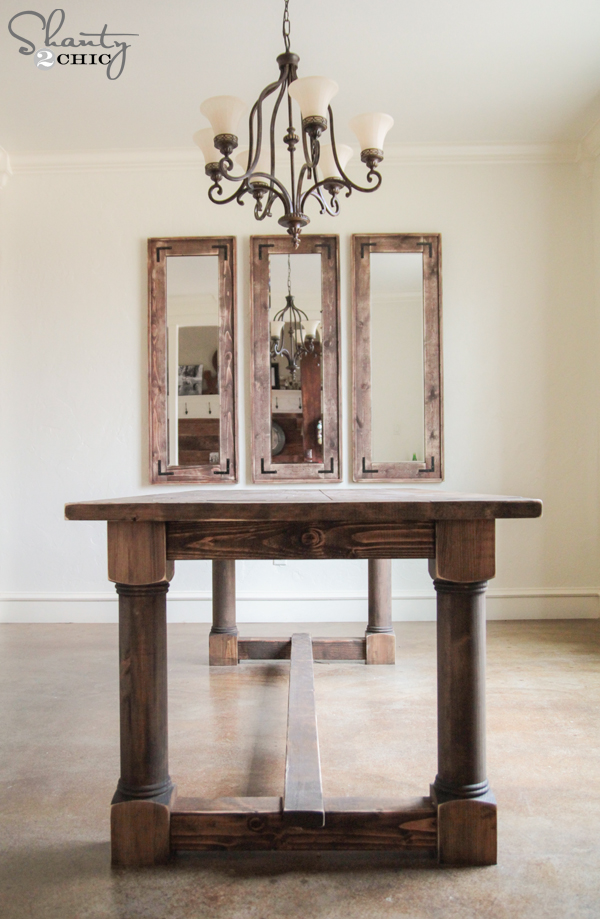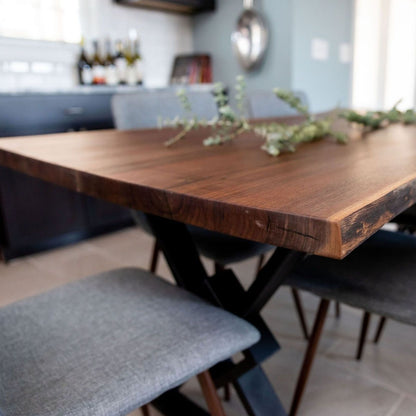Tips for Installing Dining Room Table Legs for a Modern Look
Tips for Installing Dining Room Table Legs for a Modern Look
Blog Article
From Typical to Modern: Find the Ideal Dining-room Table Legs for Your Design
The selection of dining-room table legs plays a pivotal duty in specifying the general character of your space, connecting the void between traditional craftsmanship and contemporary appearances. While traditional layouts such as cabriole and transformed legs stimulate a sense of timeless elegance, contemporary designs like barrette and geometric options provide an opportunity for striking aesthetic passion. Evaluating the right balance in between these designs requires a nuanced understanding of your existing decoration and personal taste. As you think about these aspects, the question stays: how can you flawlessly incorporate these diverse leg designs to develop an unified dining experience?
Comprehending Table Leg Styles
The selection of dining-room table leg styles can substantially affect both the visual appeals and functionality of the area. Each leg design adds unique visual elements and useful attributes, accommodating varied style preferences and usage requirements. Recognizing these styles is critical for selecting the ideal dining table that aligns with your general interior layout vision.
For example, tapered legs use a clean, timeless appearance that can boost an area's elegance, while stand bases supply stability and make best use of legroom, making them excellent for smaller sized rooms. Barrette legs, a trademark of mid-century contemporary design, present an industrial panache, permitting an airy, open feeling. Likewise, trestle legs stimulate rustic appeal, providing durable support and a feeling of timelessness.
Wooden legs can bring heat and appearance, whereas metal choices typically share a smooth, contemporary vibe. Inevitably, understanding table leg designs is crucial for developing a cohesive dining area that shows personal style while making certain usefulness and convenience.
Traditional Table Leg Options
When selecting dining-room table legs, standard alternatives frequently personify timeless elegance and craftsmanship. These layouts show a rich heritage and a commitment to quality, making them optimal for those who value classic appearances.
Among the most legendary conventional leg styles is the cabriole leg, defined by its stylish rounded shape. This style usually includes decorative carvings and is most typically located in Queen Anne and Chippendale furniture. Another popular choice is the turned leg, which boasts a series of smooth, rounded forms that provide a timeless look while maintaining security.
Additionally, the straight leg, while straightforward, uses a unadorned and durable framework that can mix effortlessly with a selection of tabletop styles. For those drawn to ornate outlining, claw-and-ball feet legs evoke a feeling of magnificence and can serve as a sensational centerpiece in any type of eating area.
Finally, stand bases, although not strictly legs, provide a different conventional option that permits for ample legroom and can be magnificently sculpted. Each of these standard leg styles adds to the total ambiance of a dining area, marrying function with visual allure.

Modern Table Leg Designs
Modern table leg layouts provide a diverse variety of styles that stress tidy lines and cutting-edge materials. These designs frequently prioritize capability while serving as striking prime focus within a dining room. Minimal appearances prevail, with legs crafted from materials such as steel, glass, and engineered wood, which add to a modern and ventilated feel.
One discover here prominent style is the hairpin leg, identified by its slim, conical framework that supplies security without overwhelming the table top (dining room table legs). This design is often discovered in mid-century modern-day furniture and can easily match numerous dining table forms. One more pattern is using geometric forms, where legs might take on angular or asymmetrical forms, adding visual passion and a touch of creativity

Mixing Designs for Special Areas
Frequently, homeowners seek to develop special eating areas that show their personal design by mixing different design elements. This method permits the consolidation of diverse looks, leading to an unified yet distinct setting. For circumstances, pairing a rustic wooden table with sleek, modern steel legs can create a view distinctive contrast that boosts the space's overall allure.
In addition, incorporating vintage table legs with contemporary tabletops can evoke a feeling of background while maintaining a modern-day sensibility. Such mixes not just showcase specific taste but likewise urge creative thinking, permitting homeowners to curate an area that feels both personal and inviting.
Shade plays an important function in this blending procedure; selecting table legs that match or comparison with the existing color system can enhance visual interest. Whitewashed legs can soften the daring of a dark table surface, developing a well balanced aesthetic.
Tips for Picking the Right Legs
Selecting the right table legs is essential for achieving both functionality and aesthetic allure in your eating room. Begin by taking into consideration the total design of your area. Standard setups benefit from legs that include intricate makings or turned layouts, while modern rooms might call for sleek, minimal styles.
Next, analyze the height and security of the legs. dining room table legs. Basic table range in between 28 to 30 inches in elevation, so guarantee the legs complement this dimension for comfort. Additionally, durable materials, such as wood or metal, can improve stability and durability
Evaluate the leg form as well-- options include straight, tapered, or stand styles. Straight legs supply a traditional look, while tapered legs can add a touch of style. Pedestal bases provide adequate legroom and are suitable for smaller rooms.
Conclusion
In summary, picking the optimal eating room table legs calls for mindful factor to consider of both modern-day and traditional styles. By balancing leg design, elevation, and material with the overall decor, a cohesive and welcoming ambience can be accomplished.
The selection of eating room table leg styles can substantially influence both the looks and capability of the area. Inevitably, comprehending table leg designs is crucial for developing a cohesive eating location that mirrors individual design while guaranteeing practicality and convenience.One of link the most famous typical leg styles is the cabriole leg, identified by its stylish bent shape. Straight legs provide a traditional look, while conical legs can include a touch of elegance.In summary, choosing the perfect dining room table legs needs careful factor to consider of both conventional and contemporary designs.
Report this page